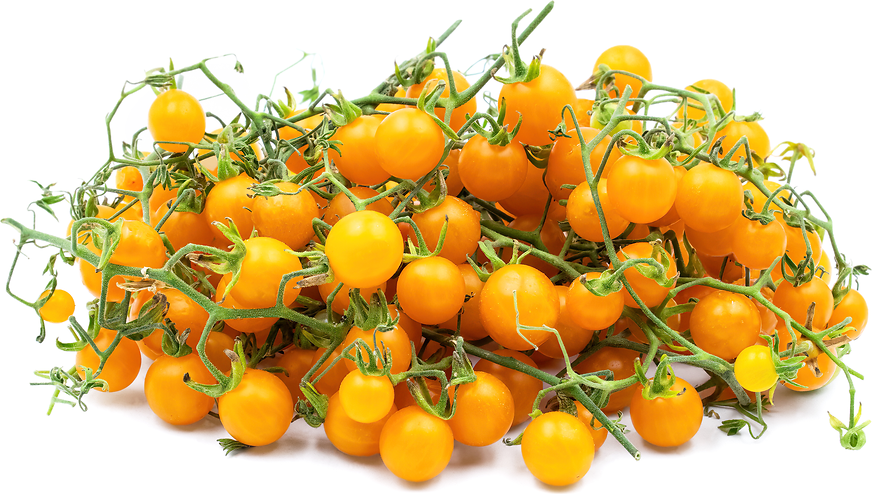


Yellow Currant Tomatoes
Estimated Inventory, lb : 0
Description/Taste
Yellow Currant tomatoes are the smallest edible tomato, each fruit weighing an average of just three grams and measuring just over a centimeter in diameter. The round, yellow fruits are notable for their intense sweet-tart flavor and firm, juicy texture. They have a thin glossy skin with two inner cells that tend to be seedy, but pack an exceptionally sweet, true tomato flavor due to their high levels of sugar and acid. The strong, sprawling indeterminate plants can grow up to eight feet, and are known to be disease resistant and high yielding, producing copious amounts of the tiny fruit all season long. The miniature fruit hangs in clusters resembling currants, hence their name. The plants have small, delicate leaves with a more acrid odor than other varieties, and the stems of the plants are petite and spindly, never developing into a trunk like other garden tomatoes.
Seasons/Availability
Yellow Currant tomatoes are available in the summer and fall.
Current Facts
Yellow Currant tomatoes are members of the large and diverse Solanaceae family, also known as the Nightshade family, which includes more than three thousand known species. Currant tomatoes, botanically named Solanum Pimpinellifolium, are a distinctive species of tomato, and they are one of two edible species alongside the common tomato, botanically named Lycopersicon esculentum. There are numerous cultivars of Currant tomatoes, both red and yellow types. Currant tomatoes have proven to be scientifically very valuable as they are closely related to one of the original wild species of tomato, which grows near the coasts of northern Peru. Hence, their DNA has been the starting point for comparing gene evolution within the Solanaceae family. Although Currant tomatoes are a different species, they will readily cross with garden tomatoes, and because of their disease resistance and their habit of producing fruit in long trusses, Currant tomatoes have been crossbred with other tomato types to create many of the modern cherry tomato cultivars.
Nutritional Value
Tomatoes are an excellent source of vitamin C and a good source of calcium and iron. They contain decent amounts of potassium and fiber, as well as vitamin A and vitamin B.
Applications
Yellow current tomatoes are most commonly used for garnish, although the fruits are extremely sweet and filled with juicy pulp, which makes them perfect for preserves. With their intense tomato flavor, they are delicious eaten fresh off the vine, and are a favorite for adding to salads. Toss them with couscous or sundry them to make your own tomato raisins, or even freeze them for a cold, refreshing summer treat. Pair with savory herbs and soft cheeses, such as fresh mozzarella, and balsamic vinaigrette. Store tomatoes at room temperature until ripe, after which refrigeration can slow the process of decay.
Ethnic/Cultural Info
French explorer Aédéc Feuilléc collected one of the earliest specimens of Currant tomatoes depicted in a botanical work during an expedition to Peru in the early 1700s, and they were being offered in seed catalogs in America as early as 1859. There is considerable diversity among varieties of tomatoes, made more complex by the widespread crossing of Currant tomatoes and cherry tomatoes. In fact, most Currant tomato varieties available in catalogs today are actually Currant tomato crosses, selections of the wild forms with improvements in fruit size or habit of growth that have been bred into them over the years.
Geography/History
Currant tomatoes are considered the closest relative to the tiny ancestral wild species of tomato, and based on genetic comparisons, the Currant split from the wild tomato roughly 1.4 million years ago. The tomato's worldly journey began from the coastal highlands of western South America where it grew wild as a sprawling weed, eventually emigrating from South America to Central America on its way to Mexico where it was first domesticated. Based on its origins, it is not surprising that Currant tomatoes have been known to tolerate some of the hottest regions for growing.
Podcast




